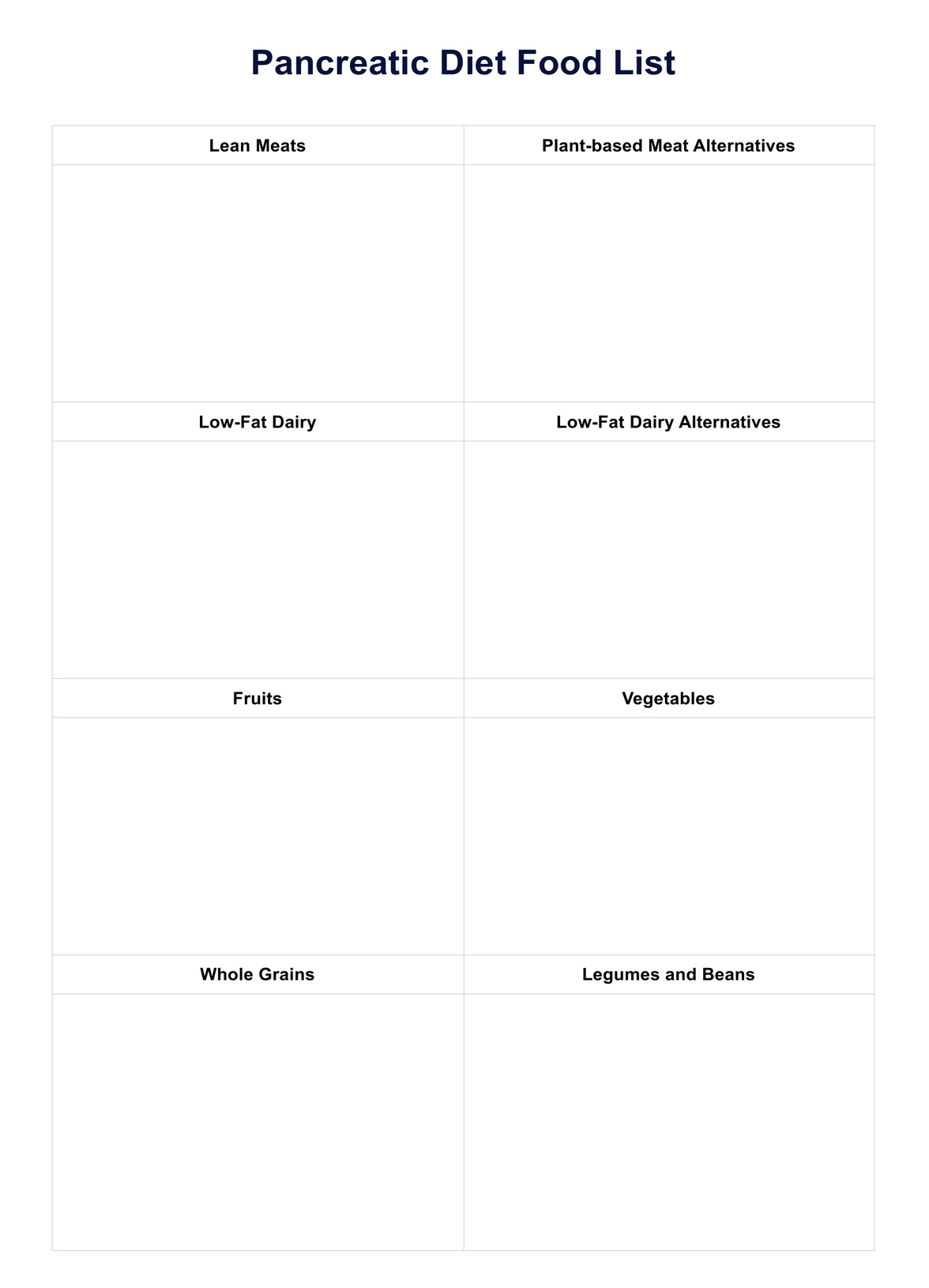Pancreatic diets are strict regarding the kind of food and drink a person must eat and how much they should eat and drink daily. This strictness ensures the pancreas can recover from pancreatitis and avoid stressing it out during meals.

Pancreatitis Diet Food List
Download our free Pancreatic Diet Food List to help you shop for healthy foods for your pancreas. Get the free template and example here.
Use Template
Pancreatitis Diet Food List Template
Commonly asked questions
Because alcohol can cause more inflammation in the pancreas, which can lead to an array of unwanted complications.
They need to follow it for as long as their dietitian says so. This will depend on the severity of the pancreatitis or how risky a person is of getting it. Once their dietitian clears them, they can switch to another diet, but patients and clients are free to follow a pancreatic diet for the rest of their lives.
EHR and practice management software
Get started for free
*No credit card required
Free
$0/usd
Unlimited clients
Telehealth
1GB of storage
Client portal text
Automated billing and online payments











